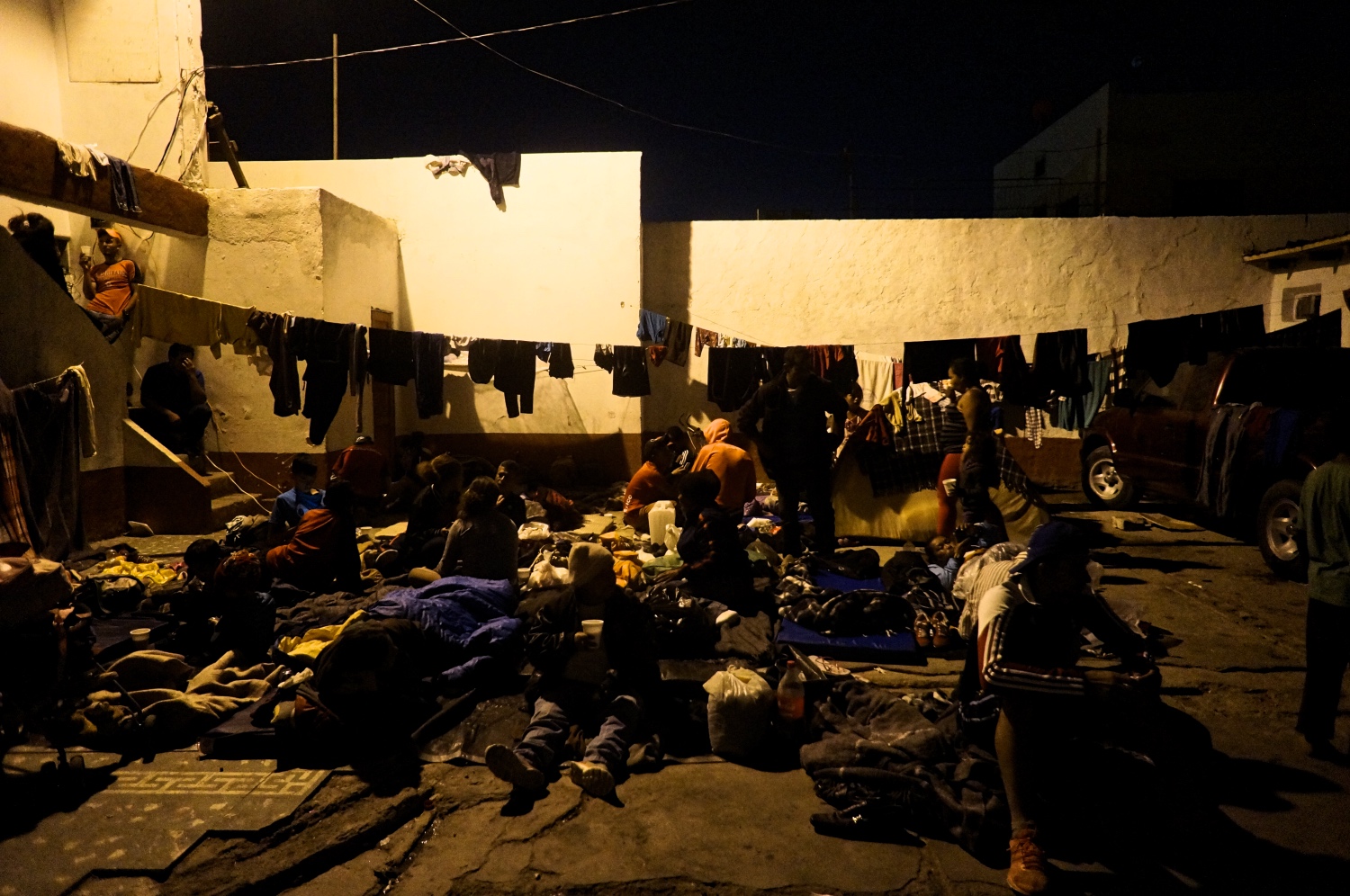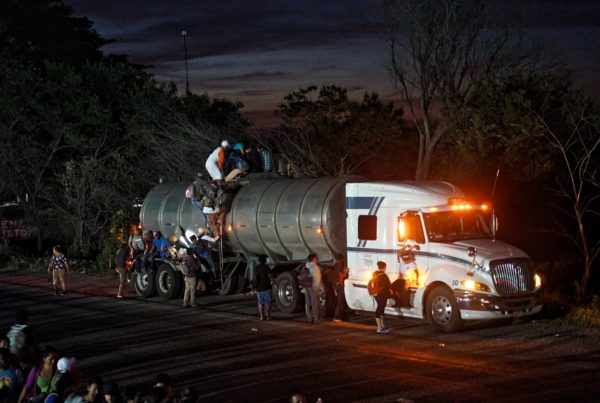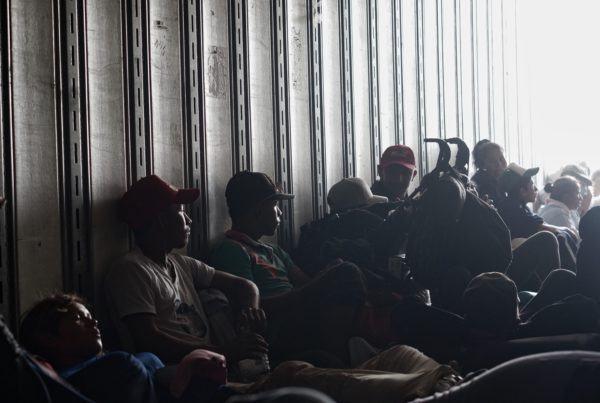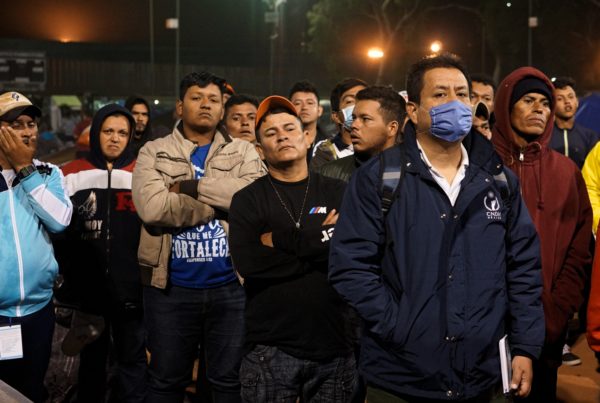The land surrounding the border town of Mexicali is a tan-coloured desert plain. The outskirts of town is populated by groupings of fibro houses on dry, dusty land. Fence palings and barbed wire fences mark out rocky property dotted with errant scrub. As I enter the city I pass slum-like neighbourhoods. I take the road which runs alongside “The Wall”.
It is an ugly, distinctly unnatural structure. Strange, angled, rusty brown steel fence palings with gaps between them which allows those on the “wrong” side of the border to peak into the “promised land”. A monument to prejudice, isolationism, fear and hatred.
“The Wall” is not one continuous structure and it doesn’t cover the whole of the 3,145 km border between the United States and Mexico. Rather it is a series of walls and fences constructed in urban and uninhabited areas where the most concentrated numbers of undocumented crossings and drug trafficking occur. As of August 2017, 705 miles had at least pedestrian fencing or vehicle fencing. A system of sensors and cameras monitored by the United States Border Patrol has also created a “virtual” fence. There are long stretches of border that have no physical barrier. The longest contiguous unfenced stretch of border is more than 600 miles.
The United States first began installation of a wall in 1993, when President Bill Clinton mandated the 14-mile “Border Wall” along a line in the sand between San Diego and Tijuana to restrict drug trafficking and illegal immigration. Since then, the US has spent billions of dollars building and monitoring the wall; although it is unclear how successful the wall is at deterring border crossings. Trump’s pledge to build a further 1000-miles of wall has been estimated to cost anywhere between US$21 billion – $70 billion depending on whether you use an internal report from the Department of Homeland Security or a report by Senate Democrats.
On my side of the Wall is Mexicali (Mexico-California), on the other side of “the Wall” there is Calexico (California-Mexico). The terrain either side of the wall is indistinguishable, but the politics is remarkably different.
Mexicali is one of the most violent cities in the state of Baja California. The infamous Sinaloa cartel has been using Mexicali as a trafficking route to the US for years. In May 2018, three men were arrested in Mexicali after security forces discovered drugs and an unfinished 700m border tunnel that ran from inside their home to the commercial centre of Calexico. In 2016, a similar tunnel was discovered by US authorities who seized US $1 million worth of marijuana and $22 million worth of cocaine. The tunnel was equipped with ventilation, electricity and an elevator that could hold 10 people.
I find Jenni, Christian and David sitting in a kerb in the red light district of Mexicali in front of the Jaguar Billiards Hall. There is a small crowd of migrants sitting, waiting, not knowing what to do. They were left here by the bus but they have not moved since. The guest houses are full and are not able to house any more people. The caravan members have Tijuana in their sights but they don’t know how to get there. On the same street, drunks swig from bottles of hard liquor, men peddle drugs from the shadows, and women in heels and short skirts wait outside and inside hotels for clients.
People from the caravan have congregated outside of the Alfa and Omega Guesthouse for Migrants. I enter through a corrugated iron front and down a narrow walkway, stepping over people’s outstretched legs. The open-air courtyard is full of people, as is the next narrow corridor which leads inside the house. The two-storey house smells of feet, urine, and vomit. There is no space left inside the overcrowded guesthouse. The guesthouse manager who prefers not to be named says this is a house of God and he is just a servant of God, doing God’s bidding. He explains that everywhere is full and there are more people arriving that evening. This includes Antonio, Tina and Pedro. They have been on the Sonora highway for 2 freezing nights but have finally secured a bus to take them to Mexicali.
I ask him how these people arranged their stay at his guesthouse and he shrugs and says, “They just turned up.”
There are roughly 2-3,000 people staying in eight different shelters in Mexicali which includes a retirement home. About 1,000 people are staying in the outskirts of the city in an empty rehabilitation centre which is being renovated. The archdiocese of Mexicali has arranged for hundreds of volunteers to make food for people in the shelters.
A lot of people are looking for their family members who they were separated from during the journey through north-west Mexico. A lot of women arrived with their children before their husbands who stayed behind because buses were giving preference to women and children. Mexicali is their chance to find each other before continuing on to the final point at Tijuana.
Jenni, Christian and David are facing a cold, dangerous night on the street, so I help them look for a cheap hotel.
The first place I enter tells me: “We don’t have any rooms for all of the night.”
I realise these rooms are hired out by the hour.
The next day people a group of people decide to march to Tijuana.



